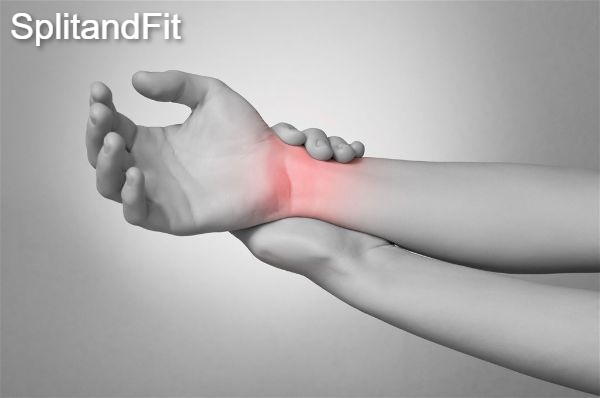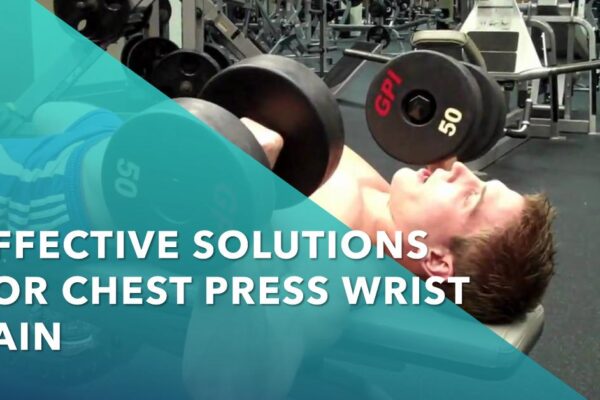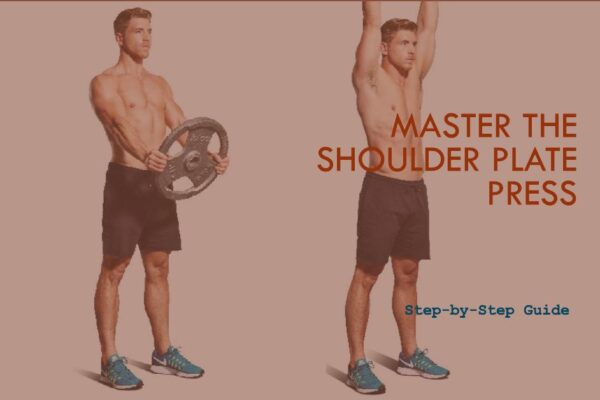Chest press wrist pain is a common issue among individuals who engage in weightlifting or strength training activities that involve pressing movements. This type of pain can significantly impact one’s workout routine and overall fitness progress if not addressed properly. Understanding the causes, symptoms, and effective strategies to manage and prevent chest press-related wrist pain is crucial for maintaining optimal wrist health and maximizing performance in chest-focused exercises.
By implementing proper techniques, strengthening exercises, and ergonomic adjustments, individuals can alleviate discomfort, improve wrist stability, and continue pursuing their fitness goals with reduced risk of wrist injuries during chest press workouts.

Why Chest Press Wrist Pain Occurs?
Chest press wrist pain can occur due to various factors related to technique, form, and individual anatomy. Some common reasons for experiencing wrist pain during chest press exercises include:
- Improper Wrist Positioning: Failing to maintain a neutral wrist position while performing chest press movements can lead to excessive strain on the wrists, resulting in discomfort and pain.
- Weak Wrist Muscles: Inadequate wrist strength and stability can contribute to increased vulnerability to pain during chest press exercises, as the wrists may struggle to support the weight effectively.
- Incorrect Grip Technique: Using an incorrect grip, such as an open hand grip instead of a closed overhand grip on the bar, can cause uneven distribution of force through the wrists, leading to discomfort and potential injury.
- Overuse or Overtraining: Engaging in chest press exercises excessively without allowing sufficient rest and recovery time for the wrists can lead to overuse injuries, including wrist pain.
- Underlying Joint Issues: Individuals with underlying joint conditions like arthritis or tendon problems may be more prone to experiencing wrist pain during chest press workouts due to the added stress placed on the wrists.
By addressing these factors through proper form, wrist-strengthening exercises, ergonomic adjustments, and adequate rest periods, individuals can mitigate chest press-related wrist pain and enhance their overall workout experience.

Wrist Anatomy During Chest Press
By understanding the importance of maintaining proper wrist alignment, avoiding excessive bending or extension of the wrists, and addressing potential nerve compression issues, individuals can safeguard their wrist health during chest press workouts and reduce the risk of wrist-related discomfort or injuries.
- Proper Wrist Positioning: Setting your arms flat on the bench and pushing your elbows out to a suitable angle (around 75°) can help maintain proper wrist alignment during the chest press. Ensuring that your forearms are perpendicular to the ground also supports optimal wrist positioning.
- Causes of Wrist Pain: Improper wrist positioning is a common cause of wrist pain during bench press exercises. Bending the wrists too far back can lead to excessive strain on the wrists, contributing to discomfort and potential injury.
- Ulnar Neuropathy: Ulnar neuropathy, a condition where the small branches of the ulnar nerve are compressed or damaged, can be exacerbated by certain wrist positions like extreme extension, such as when the wrists are bent back too far during the bench press.
Symptoms of Wrist Pain After Chest Press
Here are some common symptoms of wrist pain after chest press exercises:
- Wrist Discomfort: Individuals may experience general discomfort or pain in the wrists following chest press workouts, which can range from mild to severe depending on the underlying cause.
- Reduced Range of Motion: Wrist pain can lead to a decreased range of motion in the wrists, making it challenging to perform daily activities that involve wrist movement.
- Swelling and Inflammation: Swelling and inflammation around the wrist joint can accompany wrist pain after chest press exercises, indicating potential strain or injury to the wrist area.
- Tenderness to Touch: The affected wrist may feel tender to the touch, indicating sensitivity and possible inflammation in the wrist structures.
- Weakness: Weakness in the wrists following chest press workouts can be a symptom of overuse, improper form, or underlying wrist issues that contribute to pain and discomfort.
- Numbness or Tingling: In some cases, individuals may experience numbness or tingling sensations in the wrists post chest press, which could be indicative of nerve involvement or compression.
- Difficulty Gripping: Wrist pain may result in difficulty gripping objects or performing tasks that require wrist strength and stability, highlighting the impact of wrist discomfort on daily function.
By recognizing these symptoms of wrist pain after chest press exercises, individuals can take proactive steps to address the underlying causes, seek appropriate treatment, and prevent further discomfort or potential wrist injuries during future workouts.
How To Perform Chest Press: Proper Guide
A. Set up and Equipment Needed:
- Choose a flat bench and adjust it to a comfortable height.
- Select an appropriate weight for the exercise.
- Ensure the barbell or dumbbells are securely loaded and ready for use.
B. Initial Position:
- Lie flat on the bench with your feet planted firmly on the ground.
- Grip the barbell or dumbbells with hands slightly wider than shoulder-width apart.
- Lift the weight off the rack, extending your arms fully.
C. Execution of the Exercise:
- Lower the barbell or dumbbells towards your chest in a controlled manner, keeping your elbows at a 45-degree angle.
- Pause briefly when the weight is close to your chest.
- Push the weight back up to the starting position, fully extending your arms without locking your elbows.
D. Breathing Tips:
- Inhale as you lower the weight towards your chest, allowing your chest to expand.
- Exhale as you push the weight back up, engaging your core and maintaining stability throughout the movement.
- Focus on breathing rhythmically to maintain control and power during the chest press exercise.
By following these points for each step of the chest press, you can ensure proper form, maximize muscle engagement, and minimize the risk of injury during your workout.
Effective Solutions and Strategies For Wrist Pain after Chest Press
Here are some effective solutions and strategies to alleviate wrist pain after chest press exercises:
- Proper Form and Technique: Ensure correct wrist positioning during chest press exercises by maintaining a neutral wrist alignment. Avoid excessive bending or extension of the wrists to reduce strain and discomfort.
- Wrist Support: Consider using wrist wraps or braces to provide additional support and stability to the wrists during chest press workouts, especially if you have a history of wrist pain or weakness.
- Wrist Strengthening Exercises: Incorporate wrist-strengthening exercises into your routine to improve wrist stability and reduce the risk of pain. Exercises like wrist curls, reverse wrist curls, and grip strengtheners can help build wrist strength over time.
- Gradual Progression: Gradually increase the weight and intensity of your chest press exercises to allow your wrists to adapt to the workload. Avoid sudden weight changes that may put excessive stress on the wrists.
- Warm-Up and Stretching: Before chest press workouts, warm up your wrists with gentle stretches and movements to increase blood flow and flexibility. Focus on dynamic wrist stretches to prepare the wrists for exercise.
- Rest and Recovery: Allow adequate rest and recovery time for your wrists between workouts to prevent overuse injuries. Listen to your body and avoid pushing through pain or discomfort during chest press exercises.
- Consult a Professional: If wrist pain persists despite implementing these strategies, consider consulting a healthcare professional or a certified trainer for personalized advice and guidance. They can assess your wrist condition, provide tailored recommendations, and address any underlying issues contributing to the pain.
By incorporating these solutions and strategies into your fitness routine, you can effectively manage and prevent wrist pain after chest press exercises, ensuring optimal wrist health and performance during workouts.
Frequent Question Answers
| Questions | Answers |
|---|---|
| How do I protect my wrist during bench press? | To protect your wrist during bench press, ensure you use proper form, maintain a neutral wrist position, grip the bar firmly but not too tightly, and consider using wrist wraps or braces for added support. |
| Why does my wrist hurt when I press something? | Wrist pain during pressing exercises can result from improper form, excessive weight, incorrect wrist positioning, or lack of wrist strength. It’s essential to address these factors to alleviate the pain. |
| How do I stop my wrist from hurting when I lift weights? | Stop wrist pain during weightlifting by focusing on proper technique, avoiding excessive strain on the wrists, incorporating wrist-strengthening exercises, and ensuring adequate rest and recovery for the wrists. |
| Is it normal for wrists to hurt after pushups? | It’s not uncommon for wrists to experience discomfort after pushups, especially if the wrists are weak or if incorrect form is used. Strengthening the wrists and ensuring proper alignment can help reduce post-pushup wrist pain. |
| How do I strengthen my wrists? | To strengthen your wrists, consider exercises like wrist curls, reverse wrist curls, grip strengtheners, and incorporating yoga poses that target wrist strength. Consistent practice and gradual progression are key to improving wrist strength. |
| How do you fix a sore wrist? | Fix a sore wrist by resting the affected wrist, applying ice to reduce inflammation, gently stretching the wrist, avoiding activities that aggravate the pain, and seeking medical advice if the pain persists or worsens. |
| Should I stop lifting if my wrist hurts? | If you experience wrist pain during lifting, it’s advisable to pause, assess the cause of the pain (such as improper form or overuse), allow the wrists to rest and recover, and consider modifying your lifting routine to avoid exacerbating the discomfort. |
| Should I stop training if my wrist hurts? | If wrist pain occurs during training, it’s essential to listen to your body. Pausing or modifying exercises that aggravate the pain, seeking guidance from a healthcare professional or a fitness trainer, and focusing on proper wrist care are crucial steps in managing training-related wrist discomfort. |
| Why are my wrists so weak? | Weak wrists can stem from factors like lack of strength training specific to the wrists, poor wrist flexibility, overuse injuries, or underlying medical conditions. Incorporating targeted wrist-strengthening exercises and mindful wrist care can help improve wrist strength over time. |
Conclusion
Wrist pain during chest press exercises can stem from factors such as improper wrist positioning, lack of wrist support, and underlying joint issues like arthritis or tendon problems. To alleviate wrist pain during bench pressing, individuals should focus on maintaining a neutral wrist position, using a closed overhand grip, wearing wrist wraps for additional support, and ensuring that the wrists are not overly extended during the exercise.
Additionally, addressing rounded shoulders and implementing proper form techniques can also help reduce strain on the wrists and prevent discomfort during chest press workouts. By incorporating these strategies, individuals can proactively manage and mitigate wrist pain associated with chest press exercises, promoting optimal wrist health and enhancing overall workout performance.






Leave a Reply